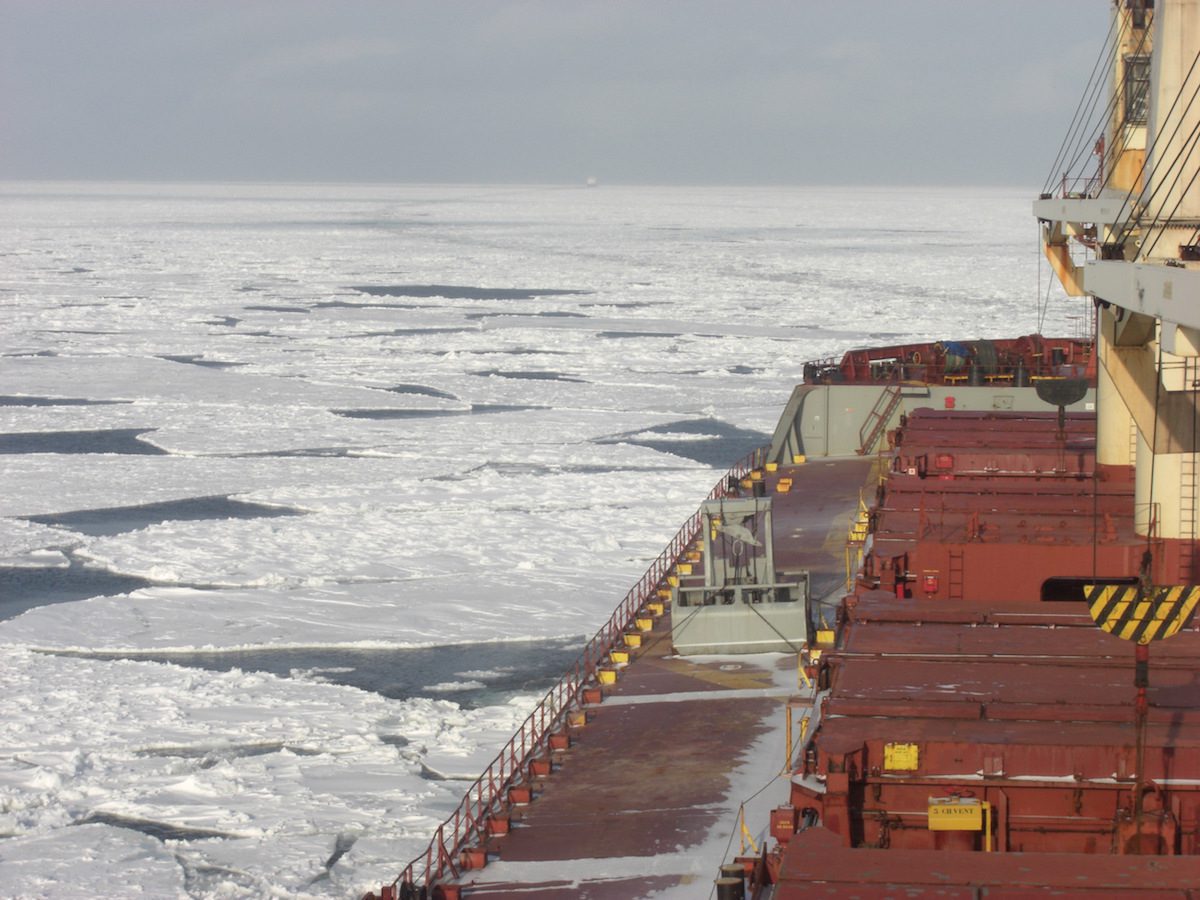Photo: Nordic Bulk Carriers
By Adam Minter
(Bloomberg View) — For centuries, a harsh climate and ice-choked seas dashed the dreams of sailors attempting to cross the Canadian Northwest Passage between Asia and Europe. Now, thanks to climate change and reduced ice cover, the trip isn’t nearly so daunting. Last weekend, the Crystal Serenity, a luxury cruise ship, carried a record thousand-plus passengers and crew through the passage. Next year, it’ll do the same.
Does this mean that the age-old vision of a time-saving, money-making Arctic passage for the world’s shippers is finally coming true? Don’t bet on it.
In theory, it’s a terrific idea. Traveling from Shanghai to Rotterdam via the Northwest Passage is about 2,200 miles shorter than going through the Panama Canal. In 2013, the Nordic Orion became the first bulk cargo carrier to traverse the passage. Bound for Finland from Vancouver, it shaved more than 1,000 miles — and $200,000 — off a more typical route. Not long after, officials at China’s Polar Research Institute predicted that 5 percent to 15 percent of China’s international trade would use the Northeast Passage, which skirts the Russian Arctic, by 2020.
And yet only 13 ships went through the Northwest Passage in 2015, and 18 through the Northeast Passage. By contrast, 13,874 ships went through the Panama Canal and 17,834 went through the Suez. That’s because traversing the Arctic, even as the climate warms, still makes very little sense for shipping companies.
The first problem is a familiar one: ice. The Arctic is warming, but it remains ice-covered most of the year. A route that can’t be accessed for months at a time isn’t attractive to large-scale shippers dependent on timing and reliability. Things don’t get much easier in the summer, either: Although the ice is receding, there’s considerable variability in where and how it does so, rendering polar passages difficult and dangerous, no matter what the season. Worse, parts of the passage are unusually shallow, and thus can only accommodate lighter cargoes.
Ice and shallow waters are more than just navigation hazards. They’re also insurance risks that can take a big bite out of the potential cost savings of an Arctic voyage. The short history of shipping in the region makes risk assessment difficult, while fear of being associated with a high-profile accident makes insurers skittish. As a result, according to one study, shippers could expect to pay an Arctic insurance premium of 50 percent to 100 percent, in addition to their standard policies. That path-breaking Nordic Orion voyage was almost scuttled by a lack of coverage.
Perhaps the biggest problem is that the business case for Arctic shipping is weak. Major international shippers create routes with lots of intermediate stops, so a container vessel travelling from Los Angeles to Hong Kong might visit 10 ports along the way, picking up and dropping off cargo throughout Asia. Needless to say, the Arctic isn’t bustling with the markets and ports needed to sustain this kind of business.
As sea ice recedes further in the years ahead, the Arctic may well become more commercially significant. It contains major oil and mineral deposits, and if extraction started in earnest, Arctic shipping would become an important factor in conveying raw material around the world. That might not be for a while, though: Over the past two years, companies relinquished billions of dollars in drilling rights in the U.S. Arctic as oil prices fell. Barring a new commodities boom, it’ll be many years before drilling under the icy seas makes sense again.
For now, at least, the Northwest Passage remains frozen to everyone but the tourists.
This column does not necessarily reflect the opinion of the editorial board or Bloomberg LP and its owners.
© 2016 Bloomberg L.P

 Join The Club
Join The Club











